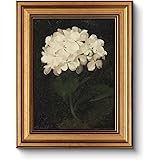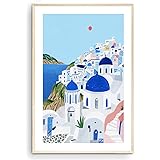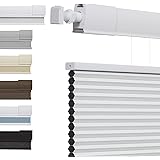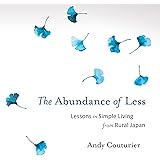The world of interior design is in constant motion, and understanding these shifts is crucial for homeowners and designers alike. As Maria Killam highlights in the video above, a significant interior design paradigm shift is underway, one that promises to redefine our living spaces well into 2026 and beyond. While many are still grappling with the remnants of stark white boxes and minimalist aesthetics, the design vanguard has already moved toward a richer, more soulful experience.
The challenge for homeowners often lies in distinguishing fleeting fads from enduring style. The prevailing advice to “choose what you love” can be deceptively simple, often leading to choices that are trendy for now, but not truly timeless. Maria Killam’s approach delves deeper, urging an awareness of current trajectories to make informed decisions that prevent design regrets. This isn’t about chasing every trend, but understanding the underlying currents that shape the coming 2026 home trends, allowing you to curate a space you will genuinely cherish forever.
Beyond Fleeting Trends: Crafting a Timeless Home Aesthetic
The interior design landscape is undeniably shifting away from the impersonal, stark white aesthetic that has dominated for nearly a decade. This style, characterized by bright white walls, black windows, and black fixtures, once felt modern and clean. Now, it frequently feels sterile and unfinished, an avoidance of genuine design choices rather than a celebration of them.
There’s a palpable yearning for spaces that exude warmth, character, and a sense of history. Homeowners are increasingly drawn to layered interiors, rich with natural wood, authentic stone, unique vintage finds, and furnishings that tell a compelling story. This move from “safe” to “soulful” is a core tenet of the emerging 2026 interior design trends.
The Enduring Power of Decorating and Styling
Many homeowners underestimate the transformative power of decorating and styling, immediately defaulting to permanent finishes for interest. While an “interesting backsplash” might seem like an easy win, Maria Killam points out that choosing the *right* one and integrating it skillfully is the mark of good design. Without this expertise, even intriguing finishes can quickly become tiresome.
For those embarking on renovations or new builds, the adage “safe is always better” for permanent finishes often holds true. The true joy and personality in a home, the elements that truly make it sing, emerge through thoughtful decorating and styling. Color, texture, lighting (lamps in every corner are critical!), and curated objects possess an incredible ability to elevate a space, even masking design choices you might later question.
Key 2026 Home Trends Redefining Interiors
The interior design world is collectively moving towards warmer, more nuanced palettes and textures. This includes a significant embrace of natural elements and craftsmanship. Here are the five defining trends set to dominate in 2026, as illuminated by industry experts like Maria Killam.
1. The Ascent of Taj Mahal Quartzite and Natural Stone
After nearly eight years of white-on-white and black-and-white kitchens, a strong reaction has propelled natural stone into the spotlight. Homeowners and designers are now “obsessed” with the inherent beauty and unique patterns of materials like Taj Mahal quartzite for kitchens and bathrooms. This particular quartzite, with its versatile mix of taupe and pink beige, is rapidly becoming the standard for the popular English countryside kitchen aesthetic.
While undoubtedly beautiful, this trend echoes the widespread adoption of Uba Tuba, New Venetian, Santa Cecilia, or Giallo Ornamental granite during the Tuscan trend of the 2000s, raising questions about its long-term timelessness. The low-contrast look inherent in many of these designs necessitates a sophisticated understanding of neutral undertones to avoid a “boring copy” or mismatched palette. For true longevity, opting for a marble-look quartz can still provide a beautiful, adaptable foundation, allowing for warmer cabinet tones, wood accents, and charming, changeable styling without being permanently tied to a specific stone’s color palette.
2. Embracing Deep, Warm Wood Tones
The pendulum swing towards warmth is perhaps most evident in the resurgence of rich, deep wood tones. The gray trend of the 2010s and the subsequent black-and-white phase until 2025 saw a concerted effort to bleach or gray out natural wood. Ashy, desaturated wood tones, popular during the pandemic, are now frequently found on clearance, signaling their decline.
This shift is not merely aesthetic; it’s a response to market dissatisfaction. As highlighted in an August 2024 LA Times article, “Soulless gray vinyl floors have infested L.A.’s rental market — and tenants hate them,” underscoring a broader rejection of artificially colored wood substitutes. While Maria Killam has long advocated for the timeless appeal of light-to-medium wood-toned floors, deeper woods like cherry, mahogany, and walnut are making a significant comeback. These richer tones layer beautifully, offering depth and sophistication. For those with existing non-wood-colored trendy tones, introducing contrasting, richer wood pieces can instantly update and warm a space.
3. Green as the New Neutral in 2026 Interior Design Trends
Green is everywhere, and its widespread adoption isn’t by chance. It emerged as a balancing force following the pervasive desaturated grays, with cognac serving as an initial warm bridge, even bringing back orange-toned woods. As the craving for color intensifies, green, much like in the 1990s, feels inherently neutral and universally appealing. It’s effectively replacing black, white, and gray as the trendy foundational neutral.
We are witnessing a proliferation of green, from “miles of green zellige tile” in bathrooms to green walls, cabinets, and exterior applications. For major installations like a primary bath, Maria advises caution, suggesting painting a vanity a rich green for easy future updates. Powder rooms, however, are ideal spaces for “color drenching” in green, a technique that has been successfully employed for decades in these smaller, more experimental areas. Green’s versatility is remarkable; it harmonizes beautifully with black and white, and seamlessly bridges into various earth tones, making it an excellent transition color in diverse palettes.
4. The Resurgence of Warm Reds and Oranges
For those craving even more warmth and depth, the red and orange family is trending strongly for 2026. This includes rich burgundies, earthy rusty tones, mid-toned dusty pinks, and vibrant terracottas. These colors have been visible in fashion for “several seasons,” a precursor to their slower adoption in home interiors, where purchases are larger and more deliberate.
The return of colors like burgundy is particularly noteworthy; Maria Killam recounts pulling burgundy out of dining rooms for decades, illustrating the cyclical nature of trends. These “toasty, decadent” hues evoke comfort and sophistication. Homeowners can easily incorporate these trending colors through paint, creating impactful accent walls or color-drenched rooms, offering a more accessible entry point than major renovations.
5. The “New Tuscan Trend” Reimagined
The return of the Tuscan trend is perhaps the most surprising development, prompting reactions like Maria’s “I didn’t think I’d see it again in my lifetime.” Yet, like all trends, it’s reappearing with a contemporary twist. The infamous fake Mediterranean scrolly light fixtures and furniture, paired with espresso brown finishes and earthy granite of the 2000s, are thankfully not making a direct comeback.
Instead, this “new Tuscan” embraces authenticity and artisanal craftsmanship. High Point Market this spring showcased this evolution with Tara Shaw’s collection featuring medieval tapestries, elegant stone vessels, and hand-wrought metal furniture and light fixtures. This iteration is about a refined, authentic interpretation of European rustic charm, focusing on genuine materials, texture, and handcrafted elements rather than mass-produced imitation. The question now becomes: are we ready to incorporate ornamental iron furniture, lighting, and candlesticks again, albeit in a more sophisticated form?











